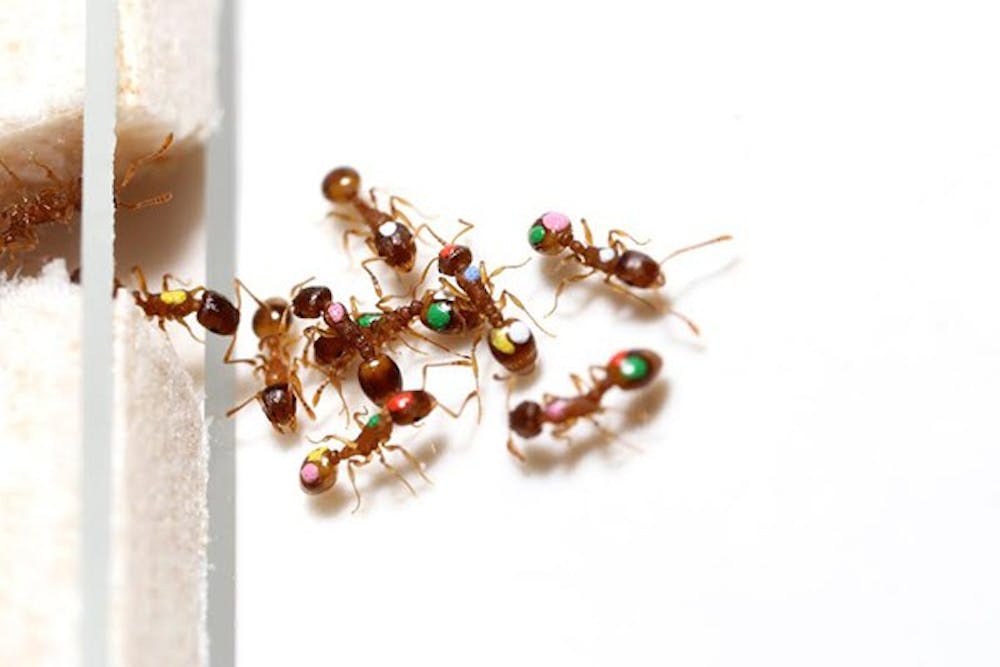 (Photo Courtesy of James S. Waters and Takao Sasaki)
(Photo Courtesy of James S. Waters and Takao Sasaki)When humans are faced with a difficult decision, they often must evaluate several factors before reaching a final conclusion. ASU researchers have found that ants also go through this way of thinking when making a decision.
Researchers Stephen Pratt and Takao Sasaki from the School of Life Sciences have conducted research on how ants make decisions.
Sasaki said there are surprisingly more similarities between ants and humans than people tend to think.
“Although the ant brain is very tiny compared to ours, they show amazing decision-making abilities,” he said. “For example, our recent study showed that ants are overwhelmed by many options and make poor decisions, as we do when we are doing online shopping.”
Sasaki has been focusing on ants for approximately six years. His other research has been a combination of psychology and social insects.
Sasaki and Pratt adopted techniques developed in psychology and economics in scenarios for humans to explore collect cognition in ants. They directly compared both individual and colony decisions and investigated how colony decisions emerged from certain kinds of ants.
Sasaki said they found that ant colonies alter their weighting of different nest site features based on an array of options they have previously experienced in past encounters.
“Past research has mainly focused on a single attribute at a time, testing whether animals change their selectivity according to the average quality of options available in their environment,” he said. “We instead created an environment where two attributes differed in how well they distinguished options and showed that colonies came to rely on the more informative feature."
Pratt and Sasaki used a species of ant called Temnothorax rugatulus, a species native to Arizona. Sasaki said they usually go to cooler climates and higher altitudes to collect the ants, as they do not like the Arizona heat.
“They live in rock crevices, so it is relatively easy to collect them,” he said. “The colony size is 100-300, which is relatively small in the ant world, so we sometimes paint these small ants to identify them during experiments. “
Although this species of ant is relatively common, they are not easy to find. Pratt said these are not the type of ants to show up at a picnic.
“We chose this species for multiple reasons,” he said. “Mostly because they have a relatively long lifespan.”
Ant colonies, like most social insects, are composed of all females. Pratt said worker ants are female and the male ants breed with the queen.
Pratt said when the ants were making a decision it was always collective, whether it is through the release of chemicals or simply following the leader.
“The choice of a nest site depends heavily on information sharing among the scout ants that organize the colony's move,” he said.
Pratt said one interesting discovery he found was that the ants, when given a choice, would choose darker nests over lighter nests.
“My guess is because a darker nest means that it is probably more structurally sound,” he said.
Jürgen Gadau is a behavioral ecologist and evolutionary biologist at the School of Life Sciences. He said social insects, like humans, change their decisions based on experience.
“It is pretty cool in the sense that they are very similar to us in cognitive behavior,” he said.
Reach the reporter at kgrega@asu.edu or follow her on twitter @kelciegrega




